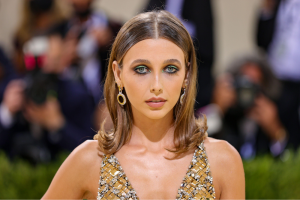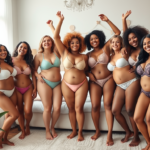Fashion marketing and communication stand at the forefront of the fashion industry, functioning as the vital bridge between fashion brands and their consumers. In the ever-evolving sartorial landscape, an effective marketing strategy is a quintessential pillar for the success of any fashion entity. On the flip side, communications strategies have also transformed with the advent of digital media, breaking down barriers and opening new avenues for interaction. Professionals in the field must therefore wield a plethora of skills, from an understanding of industry practices to the ability to engage creatively with the digital world. Whether it’s an international student pursuing a marketing degree or a seasoned professional looking to update their professional skills, mastering fashion marketing and communications is a journey of continuous learning and adaptation.

The Foundations of Fashion Marketing
The core of fashion marketing lies in crafting a narrative that resonates with target audiences and drives brand loyalty. For businesses in the fashion sector, this involves a discerning use of various marketing tools to showcase their latest designs and deepen their brand’s impact. At its core, it is about translating fashion concepts into compelling retail offerings that stir consumer desire. Industry professionals with work experience often have an advantage, as they bring a wealth of knowledge and insight into how best to galvanize a fashion marketing campaign.
Fashion marketing professionals often focus on areas like brand management, advertising, and consumer behavior—each of which requires a unique mix of creativity and business acumen. Comprehensive courses in business management are becoming increasingly popular among students willing to make their mark on the global fashion arena. Utilizing a variety of channels, from print to digital media, fashion brands articulate their identity and values, thereby fostering a strong connection with the market.
The Shift Towards Digital Domination
The proliferation of digital marketing has altered the fashion communication landscape, offering brands new and exciting ways to reach consumers. More than ever, fashion brands must be agile and innovative on digital platforms to capture consumer attention. This shift has seen a rise in the need for professionals with a marketing degree that incorporates digital skills as a core component.
Social media, influencer collaborations, and e-commerce platforms have become integral parts of the marketing mix, making digital marketing courses a necessity for students and professionals aiming to excel in the fashion industry. These platforms allow for instantaneous communication, feedback, and personalized interactions, which can solidify brand loyalty and increase sales effectiveness.
Innovative Strategies in Fashion Communication
The art of storytelling as a fashion communications strategy has proven to be incredibly powerful. By weaving narratives around their collections, fashion brands can evoke emotions and build a community of followers. This approach has been further enhanced by tapping into influential personalities and celebrities who embody the brand’s ethos.
The influence of high-profile endorsers and key opinion leaders in fashion communications cannot be overstated. Their ability to sway public opinion and bring visibility to brands is a cornerstone of modern fashion marketing. As an extension of this, many fashion businesses have embraced cutting-edge technologies to create immersive experiences that redefine customer engagement. Through innovations such as Augmented Reality (AR) and Virtual Reality (VR) in campaigns and live-streamed fashion shows, customers can experience the world of fashion like never before.
The Power of Visuals in Fashion Promotion
In the visual-centric world of fashion, imagery plays a deciding role in the medium’s influence. The right visuals can catapult a fashion campaign to widespread acclaim, while subpar ones might diminish the perceived value of even the most exquisite designs. Visual communications strategies employ photography and videography, among other visual arts, to build a brand’s visual identity and communicate its message effectively.
- The Significance of Fashion Photography: With a snapshot, fashion photography has the unique capability to capture and convey the essence of a garment, setting the mood and expectations for consumers.
- Role of Videography in Fashion Storytelling: Fashion films and videos take the narrative a step further, adding motion and sound to the sensory experience, thus enriching the storytelling process.

Sustainability – A New Direction in Fashion Marketing
Among the most significant shifts in fashion marketing today is the emphasis on sustainability. As consumers become increasingly environmentally and ethically conscious, fashion brands are responding by incorporating sustainable practices into their business models and highlighting these efforts in their marketing campaigns.
Sustainable fashion has evolved from a niche to a mainstream concern, with fashion brands big and small showcasing their commitment to ethical manufacturing processes and environmentally friendly materials. This strategic change not only attracts a growing market of eco-conscious consumers but also strengthens the overall brand image and value.
Measuring Success in Fashion Marketing Campaigns
The key to gauging the effectiveness of a marketing campaign lies in clear metrics and measurable outcomes. Fashion brands that skillfully measure their activities are more likely to understand their customers and improve their strategies over time.
| Metric | Description | Importance |
|---|---|---|
| Engagement Rate | Measures interactions like likes, comments, and shares by followers. | Indicates audience interest and content quality. |
| Conversion Rate | The percentage of visitors who take the desired action. | Reflects the effectiveness of a campaign in driving sales. |
| Customer Acquisition Cost | The cost associated with convincing a consumer to buy a product/service. | Helps in understanding marketing ROI. |
Engaging with a Global Audience
As the fashion industry is inherently global, communications strategies must be adept at crossing cultural boundaries. International fashion brands employ nuanced campaigns to appeal to diverse global markets while maintaining a consistent brand voice.
Factors such as language, cultural norms, and societal values are all taken into account when crafting global fashion marketing campaigns. It is here that the seasoned experience of diverse teams and intercultural professional experiences come to the fore, ensuring that brands can engage effectively with a myriad of consumers across the globe.

Conclusion
The landscape of fashion marketing and communication has undergone a remarkable evolution, driven by the rapid developments in digital marketing, the increasing importance of sustainability, and the need for global engagement. Fashion brands must continue to innovate and adapt to remain relevant in this competitive industry. As the lines between fashion, technology, and sustainability continue to blur, the future of fashion marketing beckons professionals who are not only well-versed in traditional marketing theory but are also agile in the face of digital transformations and evolving consumer values.
FAQs:
Q1: What are the key components of a successful fashion marketing campaign?
A1: The key components include a strong brand narrative, engaging and quality visual content, strategic multi-channel presence, targeted influencer partnerships, and consistent consumer engagement which are tailored to the brand’s target audience and aligned with current marketing trends.
Q2: How has social media transformed fashion communication?
A2: Social media has revolutionized fashion communication by providing a platform for brands to showcase their products and personality in real-time, engage directly with their audience, gather immediate feedback, and virally market through the power of shares and likes.
Q3: Why is sustainability becoming an essential aspect of fashion marketing?
A3: Consumer awareness of the fashion industry’s environmental and ethical impact has grown, and many prioritize buying from brands that demonstrate sustainable practices. Emphasizing sustainability can attract these consumers and improve a brand’s image and competitive edge.
Q4: What are some common challenges faced by fashion marketers today?
A4: Fashion marketers face the challenges of keeping up with fast-changing consumer trends, high industry competition, embracing new digital technologies, sustaining consumer engagement, and integrating sustainability without sacrificing design or profits.
Q5: How can analytics improve the effectiveness of a fashion marketing strategy?
A5: Analytics provide valuable insights into consumer preferences and behavior, allow marketers to track and measure campaign performance, assist in resource allocation, help identify successful strategies, and enable data-driven decisions to refine marketing efforts.







